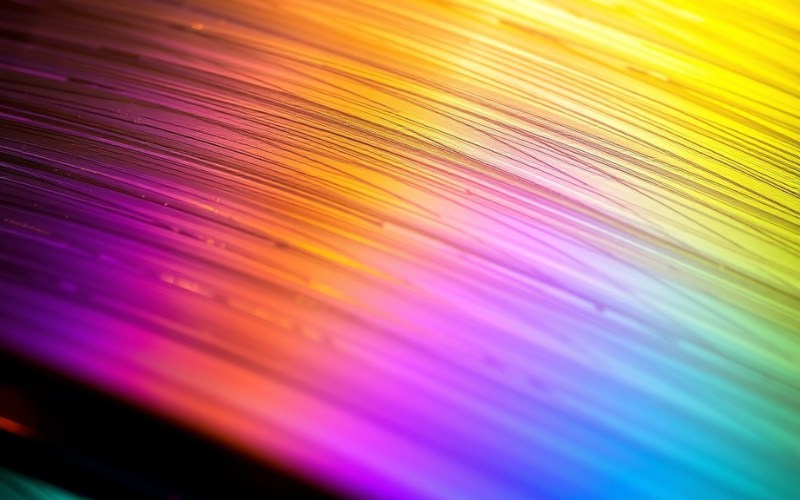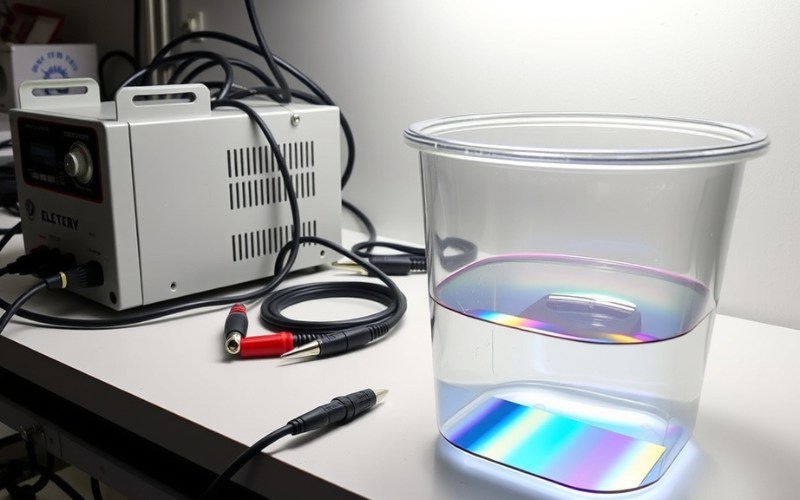Biarkan Istar membantu Anda memulai proyek Anda dengan pengalaman dan pengetahuan kami!
Unggah file desain dan persyaratan produksi Anda dan kami akan menghubungi Anda dalam waktu 30 menit!

Titanium anodizing feels a little like magic. You can watch a plain gray piece of metal turn into a rainbow of bright colors. And this happens without using any paint or dyes. If you have ever asked yourself how those shiny blue, purple, and gold colors get on titanium parts, this is the right place for you. In this article, I will explain all the things you need to know about anodized titanium. We will look at how the color is made and why it is so long-lasting. We will also see how it is different from the ways we treat other metals, like aluminum. This article is for anyone who wants to learn about the science and art used to make beautiful and useful titanium parts.
It is a special electrolytic process that changes the top layer of titanium. Painting adds a layer on top of the metal. This process is different because it changes the oxide layer that is already on the titanium surface. We put the titanium part into a special liquid bath. This liquid is called an electrolyte solution. Then, we pass electricity through it.
This action makes the natural oxide layer on the metal get thicker. The amazing part is that how thick this layer is decides the color we see. Light bounces off the top of the titanium. It also bounces off the new oxide layer. The way these two reflections mix together makes a certain color. It is all about how light works, not about using dyes. This is what makes the color so special and strong. The final color is a real part of the metal itself. This is a great feature for any part to have.

So, how do we control the final color? It all depends on one main thing: voltage. During the anodizing process, I use a special power supply. This helps me carefully control the amount of voltage that goes to the titanium part. A low voltage makes a thin oxide layer. This thin layer creates colors like bronze and purple. When I turn up the voltage, the oxide layer gets thicker, and the color changes.
The number of colors you can get is really great. As you slowly turn up the voltage, you can see the metal change. It goes from bronze to a deep purple. Then it turns into a pretty light blue. It can go all the way to bright teal and green colors. It is a very exact process. Even a tiny change in voltage can make a different shade of color. This ability lets a company that makes things create a wide variety of colors. This helps them meet the special needs for how a part will be used. The final look has a beautiful, shimmery quality.
| Voltage Range (DC) | Resulting Color |
|---|---|
| 10-25 Volts | Bronze, Brown |
| 25-40 Volts | Purple, Magenta |
| 40-55 Volts | Dark Blue, Light Blue |
| 55-70 Volts | Yellow, Rose Gold |
| 70-85 Volts | Teal, Green |
| 85-100 Volts | Bright Green |
I get this question a lot. People know about colorful anodized aluminum products. But the process for titanium is very different. The biggest difference is that the color anodizing process for aluminum needs dyes. With aluminum, the anodization process makes a surface layer with tiny holes in it. These small holes are then filled with special dyes to make the wanted color. After that, the surface is sealed shut.
Anodized titanium is different because it does not use any dyes at all. The color comes only from how thick the oxide layer is on the metal’s surface. This is why titanium anodizing colors have that special, shimmery shine that you do not see with aluminum. The process for steel is also not the same. Steel does not change in the same way. Both processes improve the metal. But the way they make color is very different. This makes the look of anodized titanium very easy to recognize.
When we talk about anodizing, you might hear about different “types.” For titanium, an important one is Type III anodized titanium. This type is not about making a bright color. It is all about making the part work better. Type III anodizing is also called gray or hard anodizing. It is a process made to greatly improve the features of titanium parts.
The main reasons for this type of anodization are to increase wear resistance and make the surface smoother. The finish it creates is much harder and thicker than the colorful layers from a Type II process. You will often see this used in the aerospace and manufacturing fields. In these fields, parts need to be extremely tough and able to handle rubbing and scraping. It does not make a bright color. But it gives amazing corrosion resistance and makes the part much stronger. This process is very important for uses where a tough, solid finish is needed.
I really need to make this clear: getting the surface ready is the most important step. Before I start any titanium anodizing process, I have to be sure the metal surface is completely clean. Any oil, grease, dirt, or even fingerprints can mess up the anodizing process. These things can cause ugly lines, spots, or a color that is not even on the final product. A dirty surface will spoil the whole look.
To get the titanium parts ready, we must use a special cleaner. We also use a careful process to take off any leftover dirt. This might mean using an acid bath or other chemical ways to prepare the surface. This makes sure that the liquid in the bath can work with the whole titanium surface in the same way. If you do not get the surface perfectly clean, you will not get an even color. The chemical action needs a pure surface to work the right way. So, taking time to get the material ready is a step you can never skip if you want a top-quality finish.
The color anodizing process itself is a very interesting trip for any metal part. I have broken it down into a few main steps. This will help you understand what happens from the beginning to the end. It is a carefully controlled action to get the perfect color.
Voltage is the main thing that controls the color. But, there are other things that can change the final color and the quality of the finish. To get a color that is the same every time, a company that makes the part must control everything about the anodizing process. Any small change can alter the result.
For example, what the electrolyte bath is made of is a very important thing to control. The type of acid used and how strong it is can change how fast the action happens. It can also change how good the oxide layer is. The temperature of the bath is also important. A steady temperature helps make sure the color is the same all over the surface of the part. Lastly, the current density must be managed. This is related to the voltage and the size of the part. Having exact control over all these things is how we make an even and repeatable color every time.
This is a fun question. The range of colors is both wide and has limits. Through the titanium anodizing process, we can make a beautiful variety of colors. We can get amazing bronze, magenta, blue, teal, rose, and green colors. These bright colors are what make anodized titanium look so good.
But, the science of how light works means there are some limits. For instance, you cannot make a true red or a pure black color with this electrolytic process. The group of anodizing colors is decided by the thickness of the oxide layer we can grow. It just does not make those specific colors. If you see a black titanium part, it was probably colored using a different method. This might be a PVD coating or a laser marking. The color we can get is beautiful, but it has its own special set of colors.

The use of anodized titanium is very broad. This is thanks to its special mix of good looks and usefulness. The coloring process is used in many fields for reasons of both style and function. The power to improve titanium parts makes this process very useful.
In the medical world, for example, titanium is safe for the body. This makes it perfect for implants. The anodization process can be used to color-code different parts. This makes them easy to tell apart during surgery. In the aerospace field, anodizing is used to improve corrosion resistance. It also provides a long-lasting finish on many parts. You will also find it in expensive sports gear, custom jewelry, and electronic parts. The use is very common because the process does more than just add color. It can also make the surface of the metal better.
One of the best things about anodized titanium is that the finish lasts a long time. The color is part of the metal itself. Because of this, it will not chip or peel off like paint. But, it can still be damaged. The thin oxide layer can be harmed by scraping or by strong chemicals.
To take care of your anodized titanium parts, you should clean them with gentle soap and water. Do not use a rough cleaner or a scrub brush. This can scratch and take off the colored surface layer. The color is very stable. It will not fade from being in the sun. But you still want to protect the finish from being physically damaged. A small amount of care will make sure that the bright color of your part lasts for a very long time. It is a tough finish, but you still need to protect it to keep it looking its best.
I hope this has given you a good idea about the wonderful world of titanium anodizing colors. It is a process I care a lot about because it mixes science and art so well. Here are the most important things you need to know: